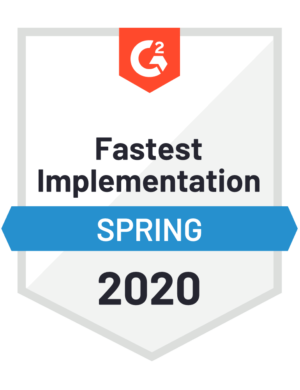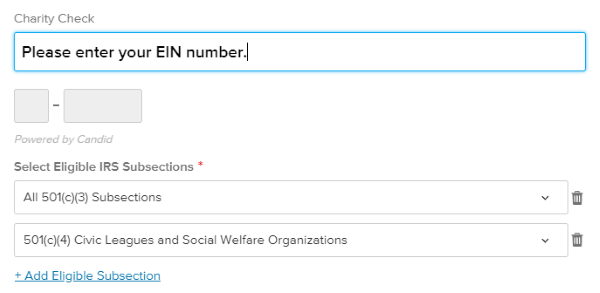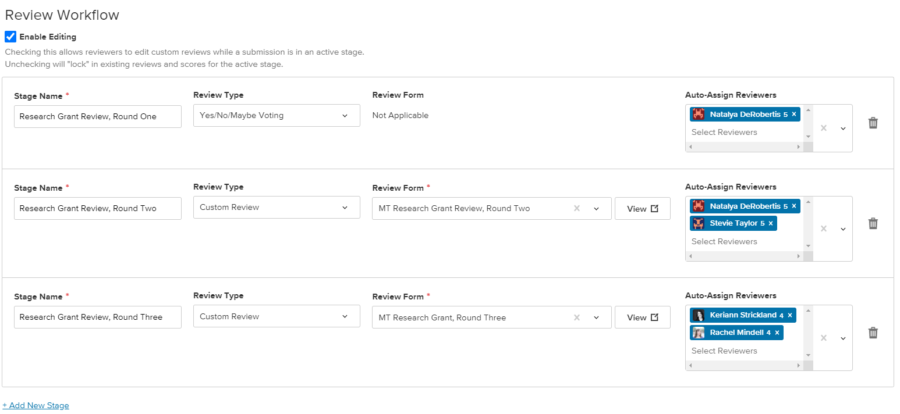Creating a grant and becoming a grant funder may take some effort, but it can be incredibly rewarding and impactful if you do it right.
It can also—no exaggeration—change the world.
Giving back to your community through starting a grant program is an admirable act of altruism that ensures your resources will be used on specific projects, consistently over time, and in line with your interests, passions, and goals.
But where do you start when you start a grant? Even if you already have funding secured, launching a grant opportunity can be intimidating and daunting, especially if you’ve never done it before.
Starting a grant without taking the proper steps can create tax issues, waste resources, or decrease the impact of your final program.
Launching a grant the right way takes significant planning, research, and thoughtfulness. Here’s how to start a grant one step at a time, to get you from idea to implementation.
1. Choose your focus and mission
The issue your grant program addresses should be specific, but not so specific that you’ll have trouble finding applicants.
Grantmaking goals tend to fall into one or more the following broad categories:
- Help marginalized groups
- Educate
- Save the environment
- Work toward equality
- Forward science/knowledge
- Provide basic needs
- Spread humanity
Within one or more of those goals, identify a specific angle for your organization’s mission. Your grant may center on funding housing for the homeless in your city, bankrolling science classes for African-American girls in middle school, or creating more habitats for spotted owls.
If you don’t have a clear idea for your organization’s focus or mission, consider funding a project based on your passions and interests. For example, do you spend a lot of time outdoors, or do you play music professionally? That could guide your community grant.
Also consider what helped you find success: perhaps it was an arts program that made you less shy, or an after school math team program that helped you find your strengths.
Next, make certain that the community actually needs what you want to offer by conducting a needs analysis. There may already be similar programs or grants in place; your grant wouldn’t create much of an impact in that case. Referencing a grant report that outlines existing programs in your area can save you a lot of time and help you focus your grant on real needs.
Bottom line: when you start a grant, choosing a mission should be a careful consideration of your areas of interest and the needs of those you want to help.

2. Determine whether you need to set up a foundation
Private foundations often fund grants from one source—like an individual, an estate, or a corporation. They are tax-exempt and managed by a director or a board of trustees and allocate their money to nonprofit organizations who apply for funds.
If you have private funds with which to establish your grantmaking program, you’ll likely want to establish an incorporated private foundation.
If you’re planning to fund your grants via a fundraising plan and public donations, you’ll likely need to establish a public charity, community foundation, or nonprofit organization. These organizations are also tax-exempt and are funded by public donations or grants from larger entities.
If you don’t care about the tax benefits of offering grants, your options are wide open as long as you have funding secured. You can distribute your money as you’d like, and focus on the nitty gritty of determining your mission and how you will collect, review, and accept proposals.
However, the vast majority of people and groups establishing grants definitely want to take advantage of the tax benefits.
Because foundations involve significant start-up costs and efforts, you may consider running your grant through an already established foundation, charity, nonprofit, or other organization. This is a good option if you:
- Don’t mind working with a larger group
- Are comfortable giving up some control
- Can locate an organization that shares your mission and goals
- Don’t wish to run your own foundation
If this option sounds best to you, begin by researching possible organizations to work with and contacting their leaders with your grant idea. In this case, you’ll want to skip down a few steps and firmly establish your grant’s funding, focus, and mission before you go any further.
Otherwise, continue to the next step to learn more about starting your own grantmaking foundation.
3. Consult with legal and tax professionals
You’ll want to consult with an attorney, accountant, and/or financial advisor to validate your decision to set up and incorporate a foundation (or not).
These professionals can also help you with the following documents and forms:
- Articles of incorporation
- Foundation bylaws
- Tax-exempt status (IRS Form 1023)
While incorporating and achieving tax-exempt status are not required, they are highly recommended for most people who wish to start a private foundation.
Having tax-exempt status saves you from having to pay the government for your charitable endeavors and increases the impact of your grant program.
Incorporation allows your foundation to become its own legal entity, which ensures that it can continue even after your involvement ends. It also ensures that you will not be personally liable if legal issues arise.
4. Assemble a Board of Directors
Once you’ve created your grantmaking entity, it’s time to put together a Board of Directors or panel of trustees. The size of this group can vary, but every one should have a few things in common:
- Passionate about the mission of the grant
- Available to dedicate time and energy to your cause
- Knowledgeable about some aspect of your grant program or mission
It’s completely acceptable to add friends or acquaintances to your board. But it’s also important to achieve diversity: not only is it the right thing to do, but it will help your foundation to have a board with a wide range of experiences and knowledge.
Consider an application process for your board. You can even use Submittable to collect, review, and select board member applications much in the same way you’d use it with grant proposals.
5. Determine grant funding details
Finally, with the assistance of your new board, it’s time to dig into the details of your grant funding.
Depending on your goals, your mission, and the funds you have available, you need to make decisions about both time and money. More specifically, you should focus on three questions:
What’s the best size for your grant program?
Do you want to give a very large amount of money to one large organization, like some federal grants and government grants do? Or do you want to give a series of microgrants to dozens, hundreds, or thousands of grantees, as you would with small business grants or small business loans?
Depending on your program, one avenue could have a much larger impact than the other.
What’s the best duration for your grant program?
Different grants have different lifecycles. Some run annually, some run seasonally, and others run continuously.
Which grant lifecycle gives you enough time to execute on administrative tasks while also allowing your money to make a difference?
How will grant funds be used?
As the one awarding funds, you get to decide exactly how grant funds can be used by grantees.
You can be as strict or lax as you’d like—although in recent years, the trend in philanthropy has been to give grantees more leeway to spend their grant money on general operating costs or adjacent expenses.
Remember: these funding details are not set in stone and you can make changes as you learn. When you start a grant program, you will make mistakes and require adjustments (and that’s okay!).
6. Write a business plan
Next up: your business plan. Specifically, when you start a grant program, your business plan should include details on how you’ll allocate the program’s funds, and what resources you’ll need to make the program efficient and effective.
You want to strike a smart balance between spending on grants versus administrative and operational costs. After all, effective grant management requires having sufficient resources.
Luckily, your board of directors will be there to help you through each part of this step, from allocating spending to hiring.
7. Write a marketing plan
Branding and marketing are your next project. You’ll need a logo and tagline, and you’ll need to establish your tone and voice. You’ll need a website and social media accounts, too.
You’ll also need to start thinking about brand awareness and your marketing budget for advertising and PR.
Be sure to reserve part of your marketing budget for advertising your call for grant proposals.
8. Establish the grant’s terms
Writing out a grant’s guidelines at this point should be pretty straightforward since you’ve already determined your mission, your focus, your funding details, and your lifecycle.
The grant’s terms and guidelines should include absolutely everything that a grant writer would need to know to apply, including:
- All important deadlines
- All grant requirements
- All application requirements
- The grant’s goal/mission
- The amount of the grant
- The grant’s timeline
- The grant’s reporting requirements
Once you have your guidelines, format them so that they’re easy to read and accessible on a landing page.
Make certain that your landing page is branded and easy to find for grant writers and grant seekers. Submittable’s grant management system makes it easy to set up your branded landing page and guidelines.

Want to speed up your grant management process?
Submittable simplifies even robust grant review processes to save you time.
9. Set up an application process
It’s finally time to set up your grant application online so you can start accepting grant proposals.
With the help of your grant administrators, use a grant management platform like Submittable to build your application form.
When creating your grant application form, find a happy medium between asking for too much information (which creates a barrier to applying) and not asking for enough information (which makes it hard to pick the best applications).

The length of your application should also reflect the size and heft of your grant. A grant writer will put more time and effort into a government grant or federal grant worth millions, but less time into a small business grant that is for a few hundred or a few thousand dollars.
Submittable’s form builder has the fastest implementation of any platform by a long shot, and our features make it easy to create responsive, accessible forms with logic and conditions that fit your exact needs.
Plus, Submittable’s eligibility quizzes save you and applicants time by screening out unqualified candidates before they even get to your application.

10. Organize a review process and post your call for proposals
Assemble a review board and a process for reviewing grant applications and picking successful grant proposals.
Considerations for your review board:
- How many people will you need to review grant proposals?
- Will any or all of these people need specific expertise?
- How will they be compensated?
- How much time will they need to dedicate to you?
- Where will your reviewers be located? Will they be remote?
- What kind of training will your reviewers require?
- How will you ensure diversity and inclusion on your board?
Considerations for your review process:
- What will your scoring rubric be?
- How many rounds of review will you require?
- Will you engage in anonymous review, or keep any fields hidden?
- How will you minimize bias during your process?
- How long will this process take?
- Will you share review comments or notes with your grant applicants?
- How will you determine the final decision?
Submittable makes it easy to systematize almost all of these considerations, making your review process more efficient, more effective, and less prone to bias.

One of Submittable’s many review features includes multiple rounds of review, so that you can easily divide and conquer even the largest and most complex grant application processes.
Welcome to the world of giving
Establishing a grant the right way takes time, resources, effort, and care. But even small business grants and grants for individuals can change lives and shape the world we live in. A grant award of any size can make your community better. Start a grant, change the world.
Once you establish your foundation, create your board, and turn your thoughts into a mission, Submittable can help you with every detail of collecting and reviewing grant applications.
Making a grant is work, but it doesn’t have to be quite as much work as it used to be.